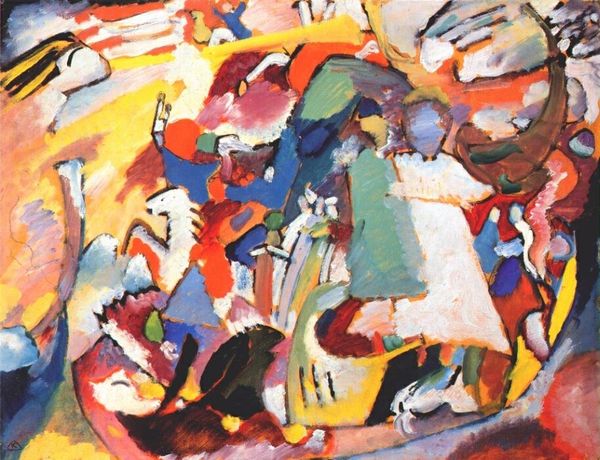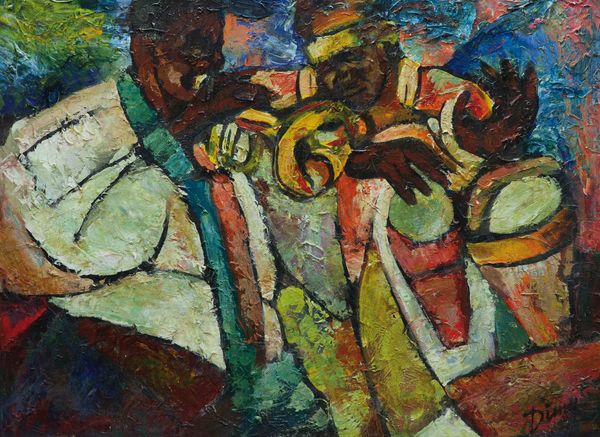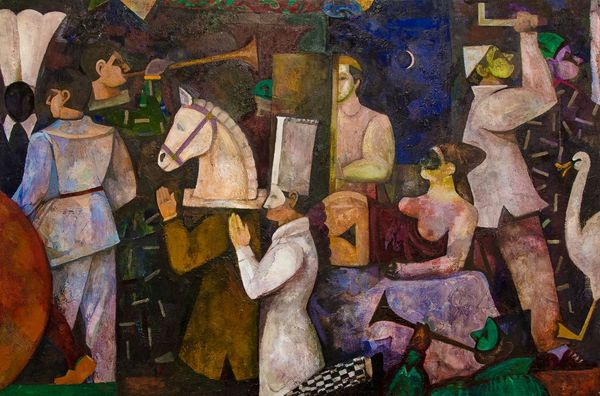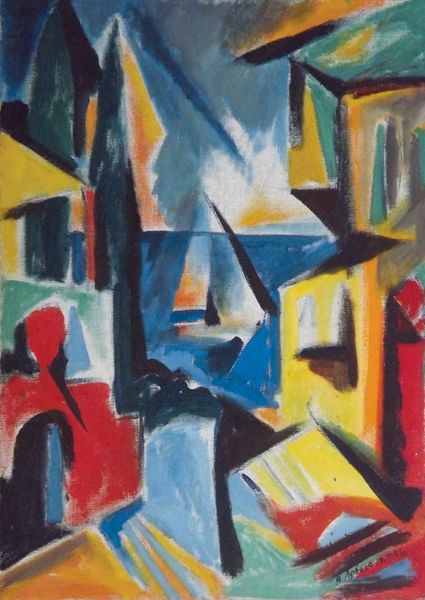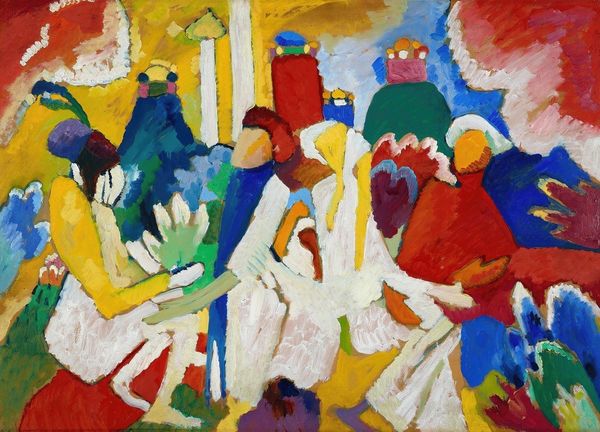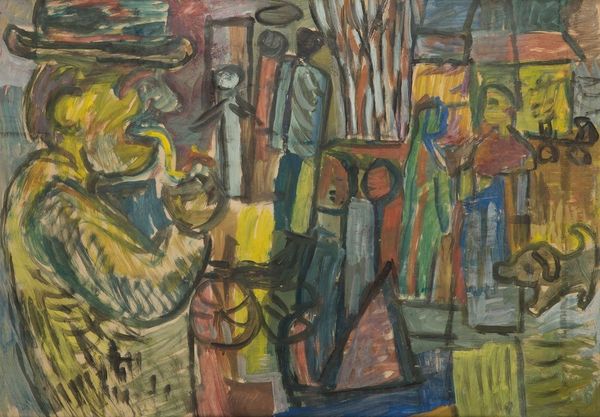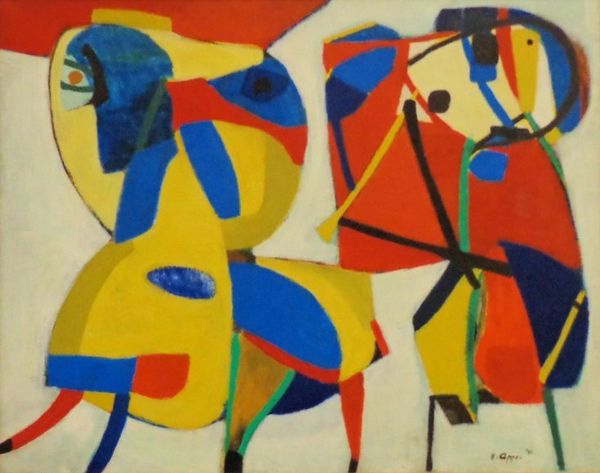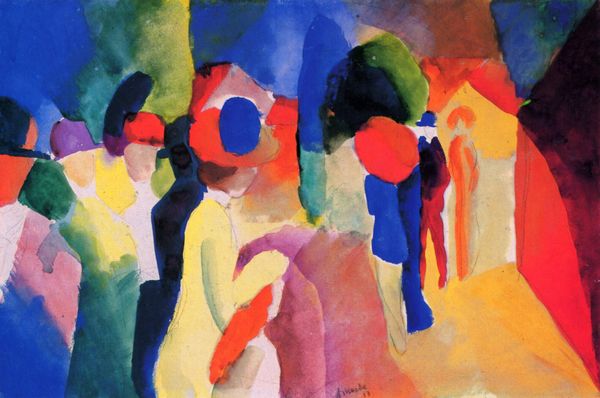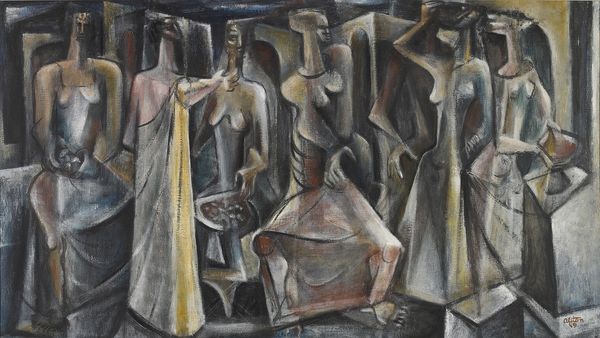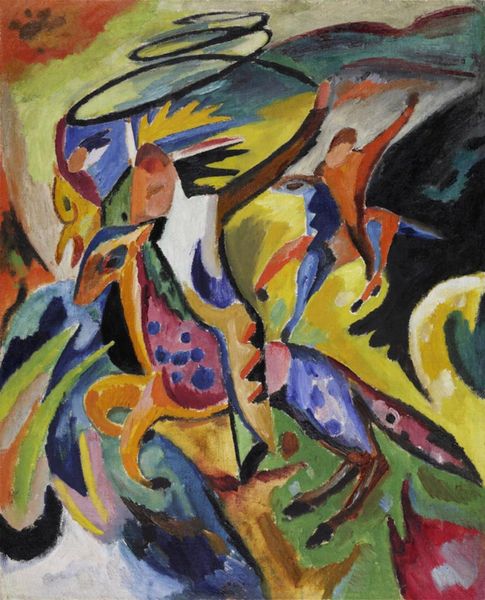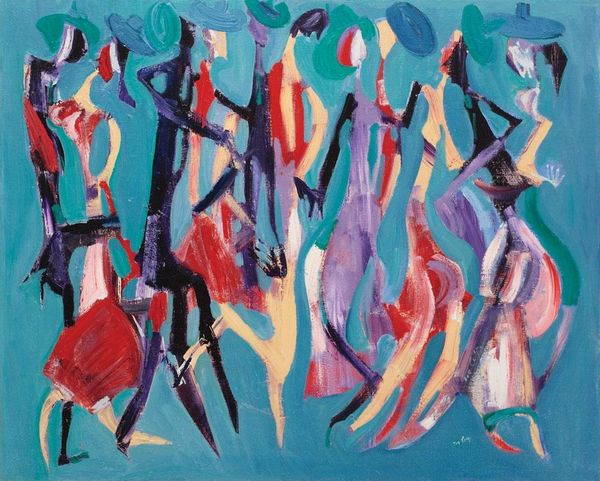
Copyright: Public Domain: Artvee
Curator: Sasza Blonder's "Kompozycja z defilujacymi," created in 1933, presents an intriguing visual experience in mixed media. Editor: It has this uncanny atmosphere, almost like a half-remembered dream. The color choices are fascinating – vibrant yet somehow muted, the planes disorienting. Curator: The artist merges elements of cubism and fauvism, resulting in a striking figuration executed with loose geometry. Note how color dictates the form rather than the other way around, especially when you observe how it delineates space, and how objects push or retreat within the pictorial structure. Editor: What strikes me, seeing the figures—soldiers, maybe, with a musician on what could be an elephant, is how art echoed political pageantry in the interwar period. Abstraction still served specific socio-political narratives. Is this a celebration, or a satire? It is difficult to say. Curator: I think we must consider it within the artist’s unique visual vocabulary rather than relying solely on political interpretation. The work balances expressive freedom and pictorial control. The raw application of color and abstract forms gives an intense presence. The overall composition transcends the identifiable aspects within it. Editor: Agreed. And that is perhaps what keeps us returning to such works, trying to decipher these artistic languages, to see whether art of that era echoed, challenged or somehow predicted those disruptive, uneasy times. Curator: Exactly. These visual puzzles require attentive contemplation to better understand how elements contribute to the broader aesthetic experience. Editor: The interplay of figuration and Fauvist coloration offer us today some historical hints and food for thought.
Comments
No comments
Be the first to comment and join the conversation on the ultimate creative platform.
